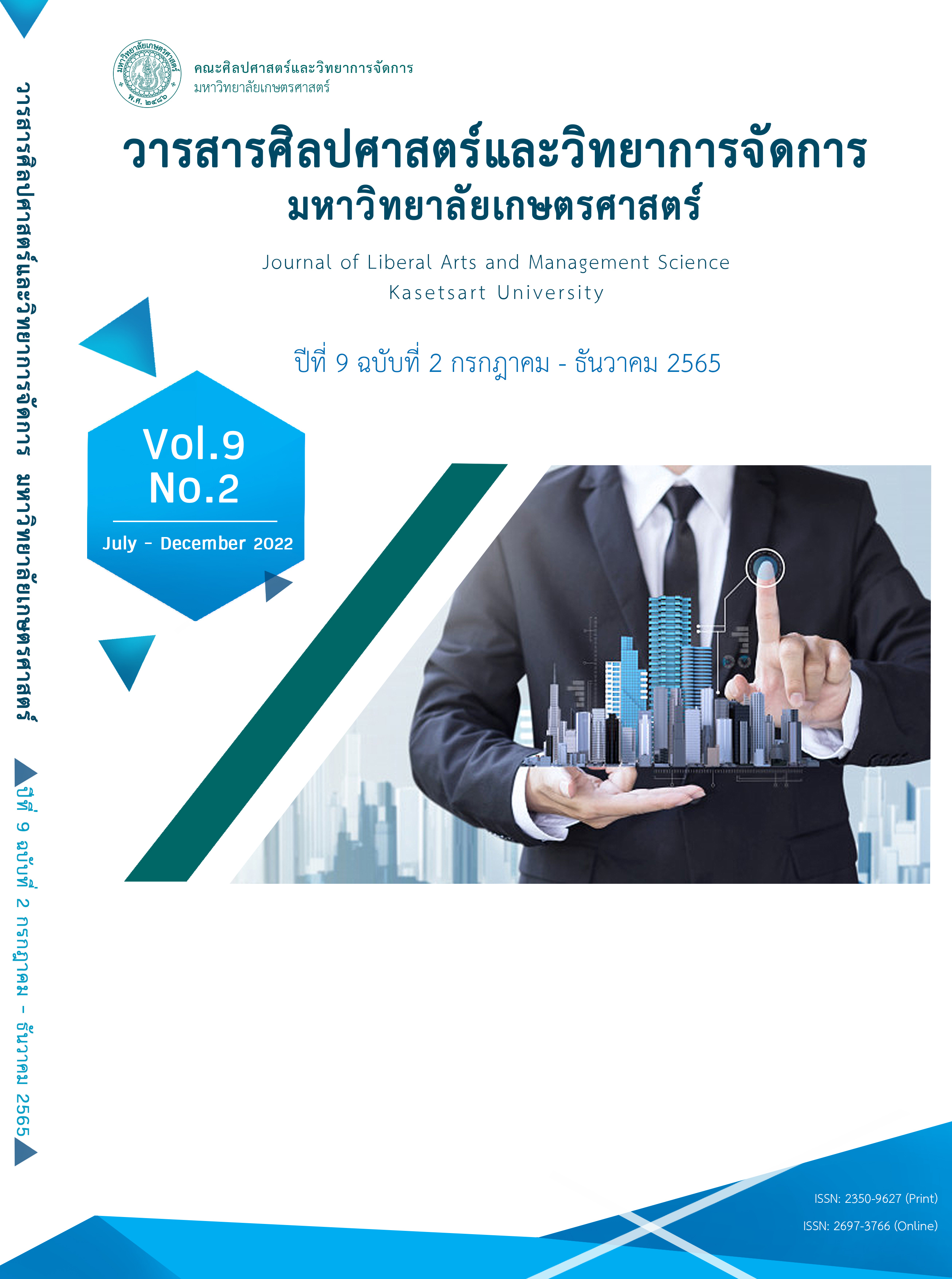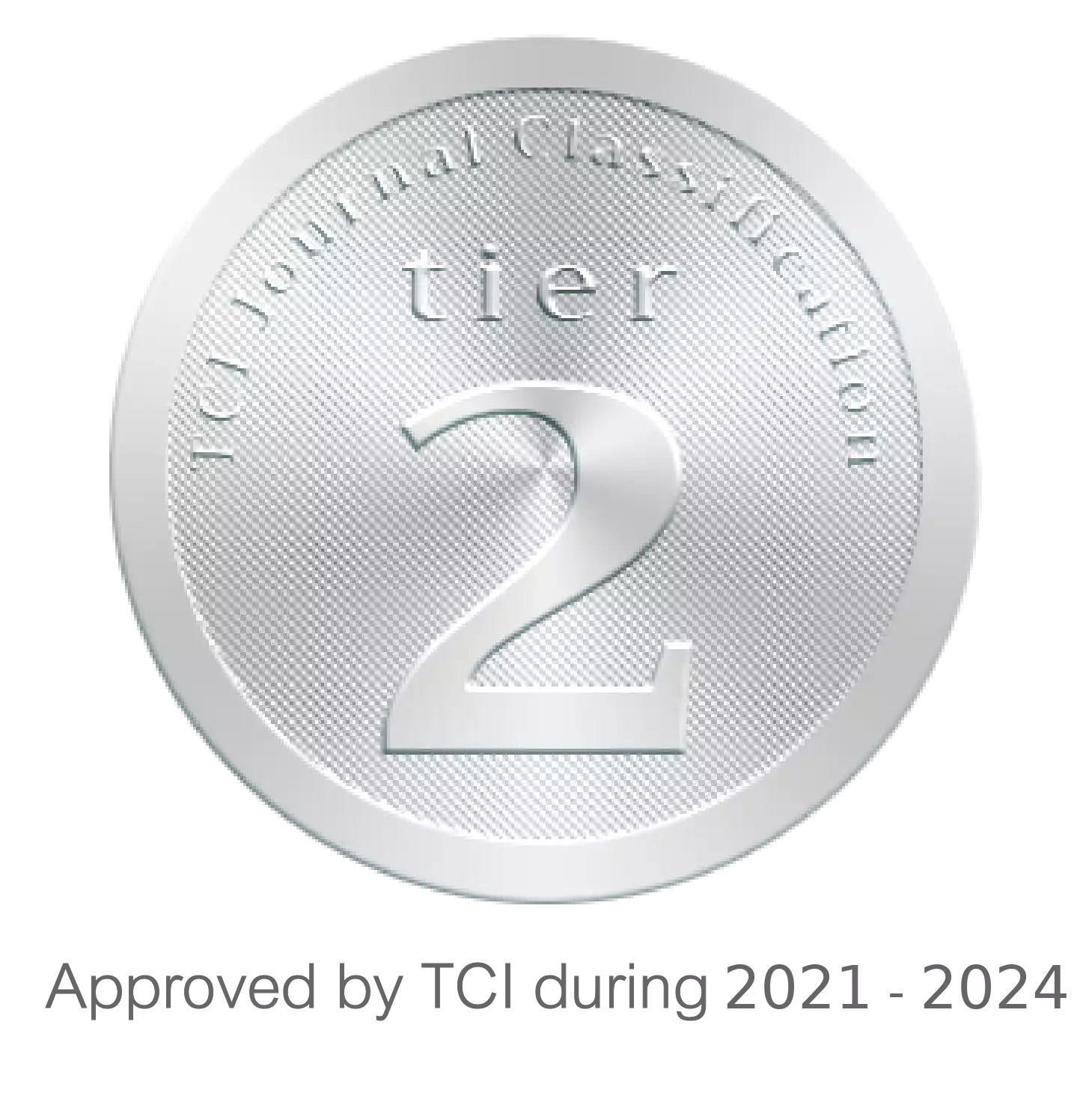ผลกระทบของสถานการณ์แพร่ระบาดโรคติดเชื้อไวรัสโคโรนาต่อผลตอบแทนดัชนีอุตสาหกรรม 8 กลุ่ม ของตลาดหลักทรัพย์แห่งประเทศไทย
คำสำคัญ:
เหตุการณ์ศึกษา, ผลตอบแทนดัชนีอุตสาหกรรม, ไวรัสโคโรนาบทคัดย่อ
งานวิจัยนี้มีวัตถุประสงค์เพื่อศึกษาผลกระทบของการแพร่ระบาดโรคติดเชื้อไวรัสโคโรนาต่ออัตราผลตอบแทนของดัชนีอุตสาหกรรม 8 กลุ่ม ในตลาดหลักทรัพย์แห่งประเทศไทย โดยใช้การศึกษาเหตุการณ์เป็นเครื่องมือการทดสอบวิจัยเชิงประจักษ์ งานวิจัยนี้ทำการศึกษาในช่วงเวลาตั้งแต่ 13 มกราคม พ.ศ. 2563 ถึง 2 เมษายน 2563 ผลการศึกษาพบว่าการแพร่ระบาดของโรคติดเชื้อไวรัสโคโรนาส่งผลกระทบอย่างมีนัยสำคัญทางสถิติต่อกลุ่มอุตสาหกรรมสองกลุ่ม คือกลุ่มธุรกิจการเงิน และกลุ่มเทคโนโลยี โดยอัตราผลตอบแทนเฉลี่ยเกินปกติ และอัตราผลตอบแทนสะสมเกินปกติของกลุ่มธุรกิจการเงินมีค่าเป็นลบ ส่วนกลุ่มเทคโนโลยีมีค่าเป็นบวก ซึ่งชี้ให้เห็นว่าภายใต้สถานการณ์การแพร่ระบาดของโรคติดเชื้อไวรัสโคโรนา จะส่งผลกระทบต่อเศรษฐกิจโดยรวม แต่ก็ยังคงให้ประโยชน์ต่ออุตสาหกรรมบางกลุ่ม เช่น กลุ่มเทคโนโลยีที่ยังคงสามารถสร้างโอกาสให้แก่นักลงทุนในระยะสั้นได้
##plugins.generic.usageStats.downloads##
เอกสารอ้างอิง
AlAli, M. S. (2020). The effect of who COVID-19 announcement on Asian Stock Markets returns: an event study analysis. Journal of Economics and Business, 3(3).
Alam, M. N., Alam, M. S., & Chavali, K. (2020). Stock market response during COVID-19 lockdown period in India: An event study. The Journal of Asian Finance, Economics and Business, 7(7), 131-137.
Aslam, F., Ferreira, P., Mughal, K. S., & Bashir, B. (2021). Intraday volatility spillovers among European financial markets during COVID-19. International Journal of Financial Studies, 9(1), 5.
Ball, R., & Brown, P. (1968). An empirical evaluation of accounting income numbers. Journal of accounting research, 159-178.
Basu, S., & Bundick, B. (2017). Uncertainty shocks in a model of effective demand. Econometrica, 85(3), 937-958.
Berger, A. N., Cerqueiro, G., & Penas, M. F. (2015). Market size structure and small business lending: Are crisis times different from normal times?. Review of Finance, 19(5), 1965-1995.
Brown, S. J., & Warner, J. B. (1985). Using daily stock returns: The case of event studies. Journal of financial economics, 14(1), 3-31.
Caballero, R. J., & Simsek, A. (2021). A model of endogenous risk intolerance and LSAPs: asset prices and aggregate demand in a “COVID-19” shock. The Review of Financial Studies, 34(11), 5522-5580.
Chalomklang, C., & Chaleampong, P. (2022). Coronavirus disease 2019 and the performance of companies listed on the Stock Exchange of Thailand (SET). Journal of Humanities and Social Sciences Thonburi University, 16(2), 125-134.
Fama, E. F. (1991). Efficient capital markets: II. The journal of finance, 46(5), 1575-1617.
Forbes, K. J., & Rigobon, R. (2002). No contagion, only interdependence: measuring stock market comovements. The journal of Finance, 57(5), 2223-2261.
Huber, C., Huber, J., & Kirchler, M. (2021). Market shocks and professionals’ investment behavior–evidence from the covid-19 crash. Journal of Banking & Finance, 133, 106247.
Khanthavit, A. (2020). World and national stock market reactions to COVID-19. ABAC Journal, 40(2).
King, B. G., & Soule, S. A. (2007). Social movements as extra-institutional entrepreneurs: The effect of protests on stock price returns. Administrative Science Quarterly, 52(3), 413-442.
Kurmann, A., & Mertens, E. (2014). Stock prices, news, and economic fluctuations: Comment. American Economic Review, 104(4), 1439-45.
Liu, H., Wang, Y., He, D., & Wang, C. (2020). Short term response of Chinese stock markets to the outbreak of COVID-19. Applied Economics, 52(53), 5859-5872.
Nicholas Taleb, N. A. S. S. I. M. (2015). The black swan: The impact of the highly improbable. Victoria, 250, 595-7955.
Panyagometh, K. (2020). The effects of pandemic event on the stock exchange of Thailand. Economies, 8(4), 90.
Ramelli, S., & Wagner, A. F. (2020). Feverish stock price reactions to COVID-19. The Review of Corporate Finance Studies, 9(3), 622-655.
Sayed, O. A., & Eledum, H. (2021). The short‐run response of Saudi Arabia stock market to the outbreak of COVID‐19 pandemic: An event‐study methodology. International Journal of Finance & Economics.
Sharma, G. D., Tiwari, A. K., Jain, M., Yadav, A., & Erkut, B. (2021). Unconditional and conditional analysis between covid-19 cases, temperature, exchange rate and stock markets using wavelet coherence and wavelet partial coherence approaches. Heliyon, 7(2), e06181.
Shear, F., Ashraf, B. N., & Sadaqat, M. (2020). Are investors’ attention and uncertainty aversion the risk factors for stock markets? International evidence from the COVID-19 crisis. Risks, 9(1), 2.
Singh, B., Dhall, R., Narang, S., & Rawat, S. (2020). The outbreak of COVID-19 and stock market responses: An event study and panel data analysis for G-20 countries. Global Business Review, 0972150920957274.
Tisdell, C. A. (2020). Economic, social and political issues raised by the COVID-19 pandemic. Economic analysis and policy, 68, 17-28.
Yang, J., & Yang, C. (2021). Economic policy uncertainty, COVID-19 lockdown, and firm-level volatility: evidence from China. Pacific-Basin Finance Journal, 68, 101597.
Zaremba, A., Aharon, D. Y., Demir, E., Kizys, R., & Zawadka, D. (2021). COVID-19, government policy responses, and stock market liquidity around the world: A note. Research in International Business and Finance, 56, 101359.









